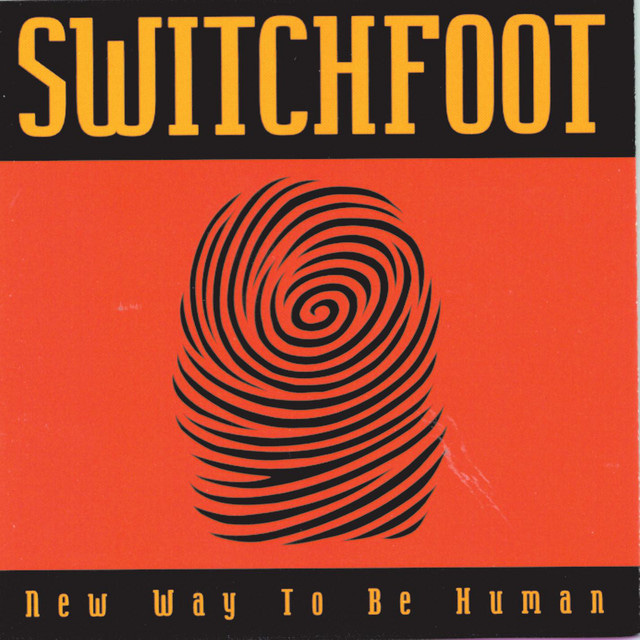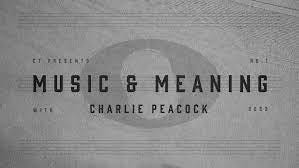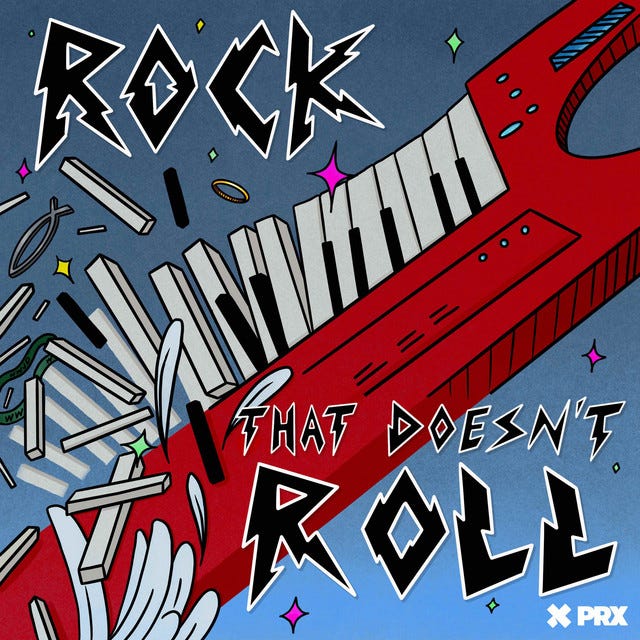I should actually start by saying this post was initially inspired by a Zoom call I was on last week.
Musician and acclaimed record producer Charlie Peacock was being interviewed about the new memoir he recently released called Roots & Rhythms.
I can’t wait to get my hands on it because I actually have very little knowledge of his career, but listening to him talk about growing up in the Bay Area and then progressing to Nashville and working in all sorts of genres, showed him to be a fascinating, down-to-earth guy.
Afterward I went down several rabbit holes in appreciation of his eclectic career as a self-proclaimed autodidact. In a few interviews, he mentioned how he was impacted by the trickle-down effect of European thought and the fountain of inspiration that was the Inklings (including C.S. Lewis and J.R.R. Tolkien, among others) as well as Francis Schaeffer’s L’Abri movement.
Most importantly for my story, Peacock’s directly responsible for one of the bands who have arguably impacted me more than almost anyone (save The Beatles, Bob Dylan and maybe The Band).
This is where I need to make an aside and speak to my relationship with the band Peacock discovered in San Diego back in 1996.
A three-piece unit made up of brothers Jonathan and Tim Foreman with drummer Chad Butler.
They are the original members of Switchfoot.
Switchfoot & Me
My relationship to Switchfoot truly started in earnest my first couple years as a student at UC San Diego in the early 2010s.
I grew up aware of Switchfoot at the height of their cultural influence with The Beautiful Letdown in 2003 and the follow-up Nothing is Sound two years later. They were part of the zeitgeist both in Contemporary Christian Music (CCM) and the alternative rock world found in TV and movies (See A Walk to Remember).
However, it was only during my time as a student that I came to appreciate our shared nexus, both being influenced by the place I called home for 5 of the most formative years of my life.
I saw Switchfoot in concert at the Del Mar Fair and attended Jon Foreman shows in and around campus on multiple occasions. Not only was Jon a good-humored UCSD dropout, he was a vibrant part of the local ecosystem. While I’ve never had long conversations with him, he always felt like a kindred spirit the few times I’ve interacted.


During these same years, I also went back and listened to their original albums from the ‘90s for the first time, Legend of Chin and New Way to Be Human.
Foreman wrote these tunes as a teenager at UCSD, the same age that I was at the time I first heard them. He managed to craft tracks that prove both universal and specific to the cultural moment back in “the 1900s” as he would call them.
Songs like “Concrete Girl” frame the brutalist architecture of the UCSD campus, founded in 1965, around peers who are trying to survive and make their way in a callous world.
Then, the infectious “Chem 6A,” named after an introductory chemistry class ubiquitous among STEM majors, uses this moniker to speak more broadly about the existential malaise of being a young person.
Even “Sooner or Later” or “Something More” seem to reflect the arena of a public research institution like UCSD, which boasted thinkers like Herbert Marcuse. You come in contact with all sorts of philosophies. So these songs about Soren Kierkegaard and Augustine, somehow feel right at home even as they represent welcomed alternatives to the prevailing worldviews.
These tunes became the background for not only my time on campus but my entire life projected forward. Although times, location, and the sounds have changed, Switchfoot and specifically Jon Foreman’s lyricism, melodies, and performances have remained a constant encouragement to me.
I realize now all of this has its roots in Charlie Peacock.
Without knowing it, I was profoundly indebted to his influence.
Although I had a vague sense of how influential he was in first signing the band and getting their first album off the ground, it was awesome to finally hear him share the genesis of how he first happened upon Switchfoot.
Well before I was even old enough to be aware of their music…
What’s Christian About Chemistry?
I know I’ve buried my lede, but the podcast episode I listened to that night was called “What’s Christian about Chemistry?”
It’s a short 16 minute remembrance full of rich ideas, though the title might sound oblique for those not already in the know.
What’s great about the episode is how Peacock himself puts us in the moment. Bands like the Foo Fighters, Pearl Jam, Sound Garden, and Oasis were riding a resurgent wave of rock n’ roll.
It planted the seed of an idea.
Peacock wanted to sign a rock band.
But he was antithetically opposed to helping a band “crossover” after they had proved themselves to a Christian audience.
He wanted to try a different approach of simultaneously marketing a band to both Christian and mainstream audiences alike. He just needed the band…
Peacock recounts how he turned to a demo tape a friend had sent him and what met his ears was the raucous opening guitar riff of “Chem 6A.” He knew he had to sign them and he did.
The boys in Switchfoot already built a following around them thanks to the local surf community, record store, and radio station in their hometown of San Diego.
Ironically, despite growing up in the church, getting them to a Christian audience was a challenge because not all their music was overtly Christian.
Peacock acknowledges the common refrain: A tune like Chem 6A was just about a chemistry class…
But this gets to a core issue. What is “Christian” as a genre or an adjective?
For Peacock, Foreman (and myself), “Christian, is everything that God loves and is redeeming.”
Like Jon and the band, I came of age at UCSD surrounded by this “sterile concrete dungeon.”
In a world such as this chemistry is the accepted parlance. However, there’s a big difference if you believe, like Peacock, that “there are no stray molecules in God’s creation” and “redemption has stories to tell.”
This in itself is an obvious reference to the band’s biggest mainstream hit, “Dare You To Move,” which is ripe with so much meaning for the believer and the agnostic alike.


Jon actually did an interview on the podcast, Rock That Doesn’t Roll: The Story of Christian Music, in the episode “Not a Christian Band (Ft. Switchfoot).” It helps give fuller definition to the story.
He keeps with the timber of what Peacock shares and adds that all the songs he wrote in the nascent stages of the band were written for people in his dorm room who didn’t believe in God.
That’s part of the reason his songs mean so much to me because I feel like we experienced the same world and the questions he had and the questions posed by the voices around him were analogous to the ones I heard as well.
And when you’re in a world like that, you soon recognize a song like “Chem 6a” is about so much more than chemistry.
It points to something more — that what you believe undergirds the very same chemistry we all accept to be true.
Two Questions
In the below interview Peacock shares some unifying thoughts that are helpful for anyone at the crossroads of Christian faith and the arts. He notes his dad modeling a commitment to craft and how he married that with a desire for robust theology.
Likewise, the “cosmological idea that there was nothing and then there was something,” is something to be enchanted by as Christian creatives. Because we are made in the image of a Creator God.
In light of discussing Switchfoot and myself, he also poses two defining questions that prove extremely helpful:
“What does it mean to be an authentic disciple of Jesus?”
“What does it mean to be an authentic artist?”
They go together and actually, he adds a third question to bridge them.
“How do these work together for the good of the world and in faithfulness to God’s mission?”
Life begins at the intersection.
The tension is real.
As Peacock says all of us at the intersection of arts and faith would do well to rid ourselves of a kind of “plug and play” pragmatism where we “call something good because it works.”
“The Cross of Christ teaches us that something can look like failure and be good.”
Just like something can look like it’s about chemistry and be about so much more.
More great information related to this topic can be found on Charlie Peacock’s Substack:





